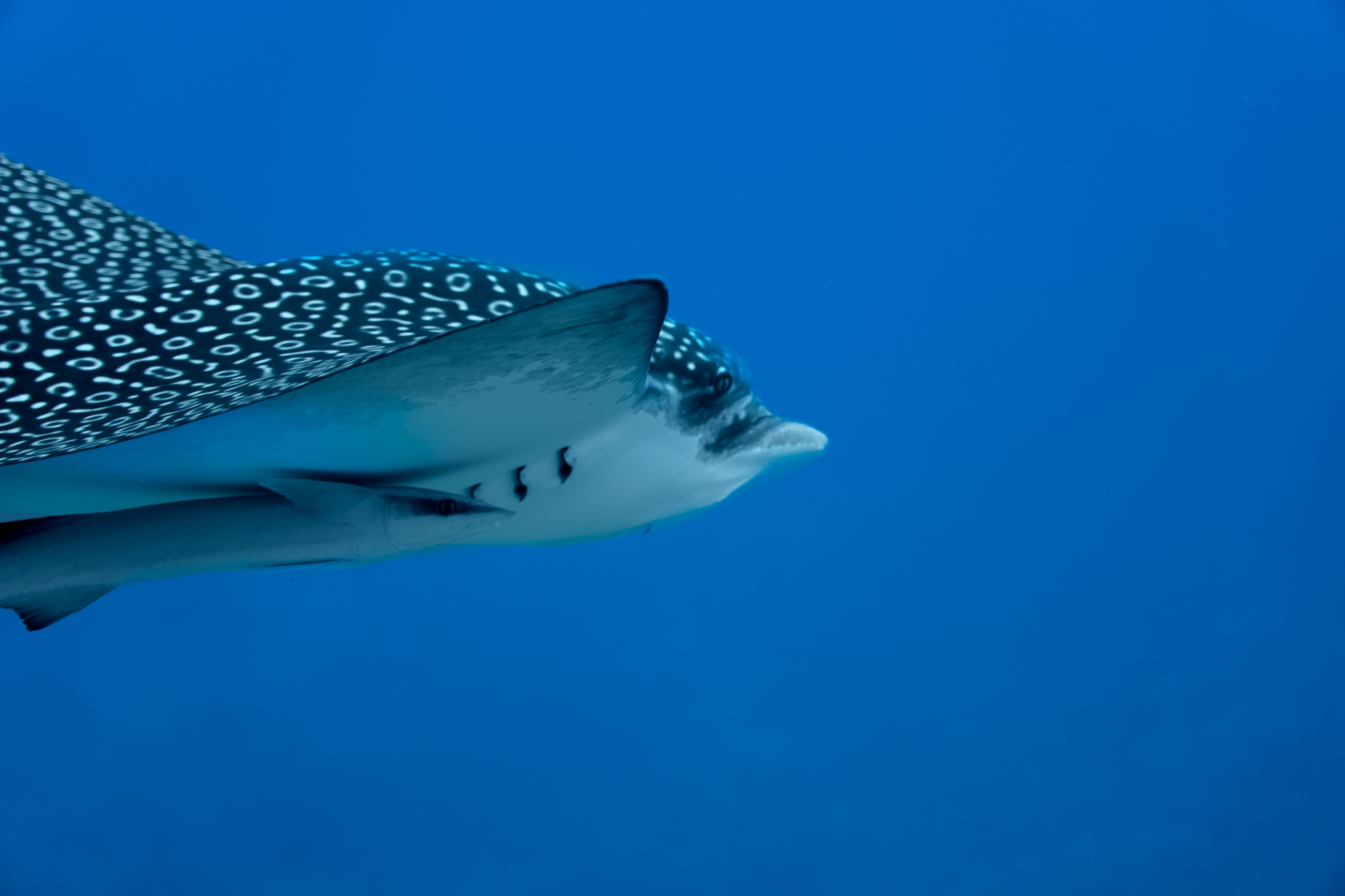Video dives Maafushi
Sinai Dive Club
Cancun Diving Highlights
The best dive spots in Cancun
The sunken ships
Wreck diving in Cancun is a journey into a mysterious past beneath the waves. These shipwrecks, now home to incredible marine life, offer unique experiences full of excitement, history and natural beauty.
Get ready to dive among amazing structures, majestic eagle rays and underwater stories you will never forget.
Stellar seasons: Eagle rays, bull shark and whale shark
Cancun is famous for its temporary activities:
Bull shark: from November to March. A radical, supervised, safe (but impressive!) experience.
Snorkeling with whale sharks: from the end of May to September 18. Although it is not diving, swimming with the largest fish in the world is a life-changing experience.
The ideal season to see eagle rays in Cancun is from November to March, when they migrate and concentrate on submerged shipwrecks.
OUR personal experience
Before launching into the deep, it was important to feel that we were in good hands.
We chose Deep Life, founded in 2010, it feels more like a family than a dive center.
We were very impressed with them because the DiveMaster had more than 40 years of knowledge in the reefs of the Mexican Caribbean. What really convinced us is that if you look for reviews of them you will see that they organize almost private dives, and we can say that choosing them was the right choice.
Scuba diving in Cancun: diving in the best underwater spots
When you think of scuba diving in Cancun, you surely imagine reefs and crystal clear waters. But if you are really ready to live an unforgettable underwater adventure, you need to know places like C-58, El Grampin and other spots that only a few have the privilege to explore.
The sunken ships: C-58 and C-55 (P. Mexico)
How we experienced going down to the sunken ship c-58 and being surrounded by more than 30 eagle rays.
The C-58, originally the USS Harlequin (AM-365), was a U.S. Navy minesweeper during World War II. After years of service she passed to the Mexican Navy, was given several names - among them ARM DM-20 and General Pedro María Anaya - until in May 2000 she was intentionally sunk as an artificial reef off Isla Mujeres/Cancún.
When I first saw the dive briefing, I was warned: deep dive, currents and penetration possible. And yes! The dive was deep (~26 m) and the best thing is that the visibility was incredible, a visual spectacle that you don't see on every dive, and believe us: we have dived a lot!
Thanks to Hurricane Wilma in 2005, the ship was split in two, which allowed you to enter its interior, cross parts and explore nooks and crannies. It is an almost organic project between metal structures, corals and marine life.
But the jewel of C-58 are the eagle rays. During their migration (November-February), we were able to see groups of up to thirty rays floating just above the wreck. Lying on the sand, looking up and watching those translucent wings pass over your head is one of the most unforgettable underwater scenes I have ever experienced.
Fish such as grouper, large barracudas and moray eels can also be observed in its cavities. And although there is tiny life (crabs, small fish), the best is the big life.
Near C-58 is C-55 (formerly USS Ransom). Also sunk in 2000, at a depth of 75 feet (≈22 m), it is divided into three sections and is home to bream, moray eels, lobsters and eagle rays in season. Below I compare them so you can choose between the two wreck options in Cancun.
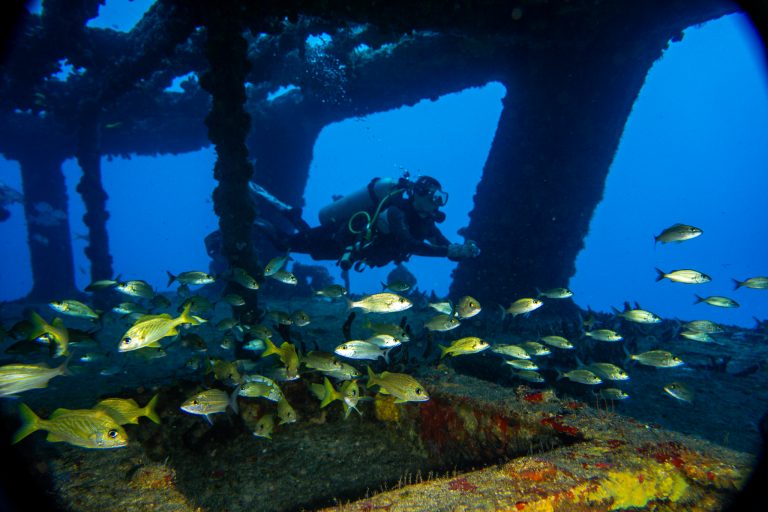
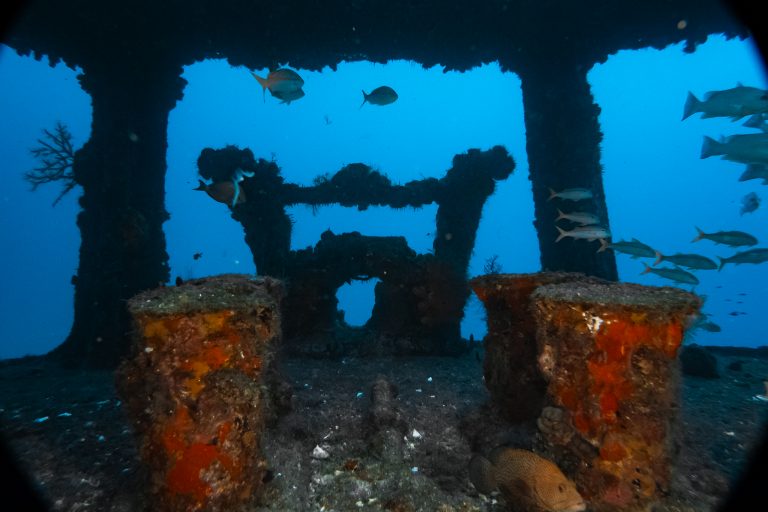
Which is better, the c-55 or the c-58?
- If you are looking for the best eagle ray experience: C-58 is superior, especially from November to February, for mass eagle ray sightings.
- If you prefer to explore shipwrecks: C-58 is better, as its split structure offers more accessible areas for penetration, with open spaces and historical details.
- If you are less experienced: C-55 may be a better option, as it is slightly more accessible for experienced Open Water divers, although it is still an advanced dive.
- If you want to combine sites: Both are close, so many operators offer combined C-58/C-55 dives, allowing you to enjoy both in one day.
- General conditions: Both have similar depths and currents, but the C-58 can be more demanding due to the lack of a drop line and stronger currents.
C-58 is generally considered the better dive site between the two, thanks to its rich history, greater documentation of wreck penetration and impressive sightings of eagle rays in winter. However, if you are a less experienced diver or looking for a less demanding site, C-55 is an excellent alternative with similar marine life and fewer restrictions.
Another great dive site near cancun
The Grampin: the reef in the shape of an anchor
Unlike the wrecks, El Grampin is a reef close to Punta Cancun, at about 15-16 m depth, ideal for divers of all levels (OW and above).
It is called Grampin because of its shape (grampin = anchor). It has mild to moderate currents, swim-throughs between corals, sponges and sandy areas full of life. I saw trumpetfish, barracudas, moray eels and needlefish, in high numbers; also fan corals and tunnel formations. Visibility is between 20 and 30 m, with a pleasant temperature of 28 °C (82 °F).
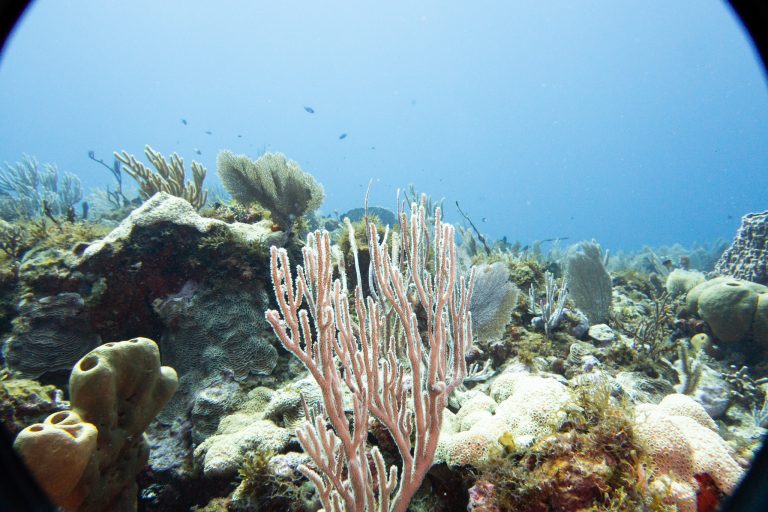
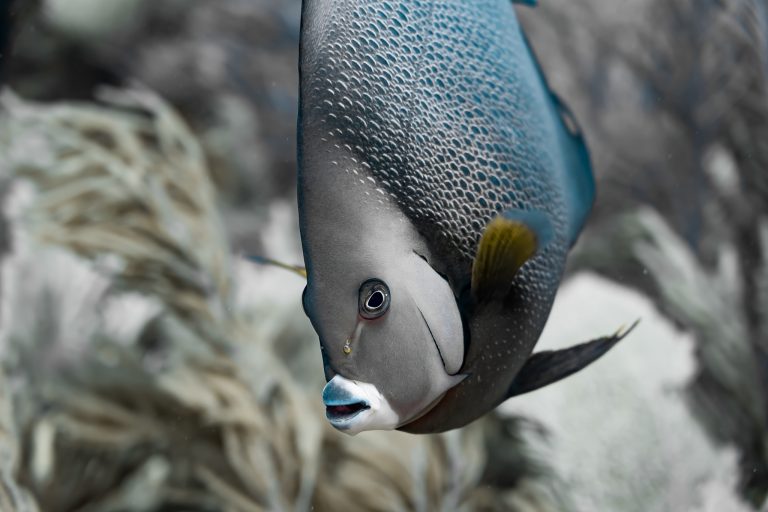
Our experience
We were lucky. The visibility was so good that it looked like we were watching the ship from a glass platform. And then... the eagle rays! Suddenly, almost 30 of them hovering just above as I explored the interior of the c-58 wreck. A surreal moment: excitement and the thought "this is from a movie".
The next dive we went to El Grampin. A more gentle dive, slow current, but equally fascinating: snorkeling through coral tunnels, moray eels coming out to say hello, hidden trumpet fish, schools of banana fish, fan corals floating like giant fans... it was the perfect transition after the wreck to a reef full of life.
A real blast!
Anecdotes that make a difference
Our dive center: Deep Life was 10 out of 10
Our divemasters demonstrated tremendous passion and professionalism:
Free transportation: The only company in Cancun that includes free transportation from any hotel in the hotel zone, facilitating the logistics to get to the dive sites.
Safety and patienceBefore each dive, they did a thorough safety review and reminded us of the basic signals, maximum depth and current considerations.
Proximity: at all times, they gave us confidence to enjoy each dive, explaining the marine fauna that we could find.
- Unforgettable moments: We were able to see nurse sharks, a large school of jacks, barracudas and an incredible variety of colorful fish. On the first dive, we came across more than 30 manta eagles flying in the blue, it was spectacular!

If you also want to live these moments, we leave you the contact information of the Deep Life dive center:

